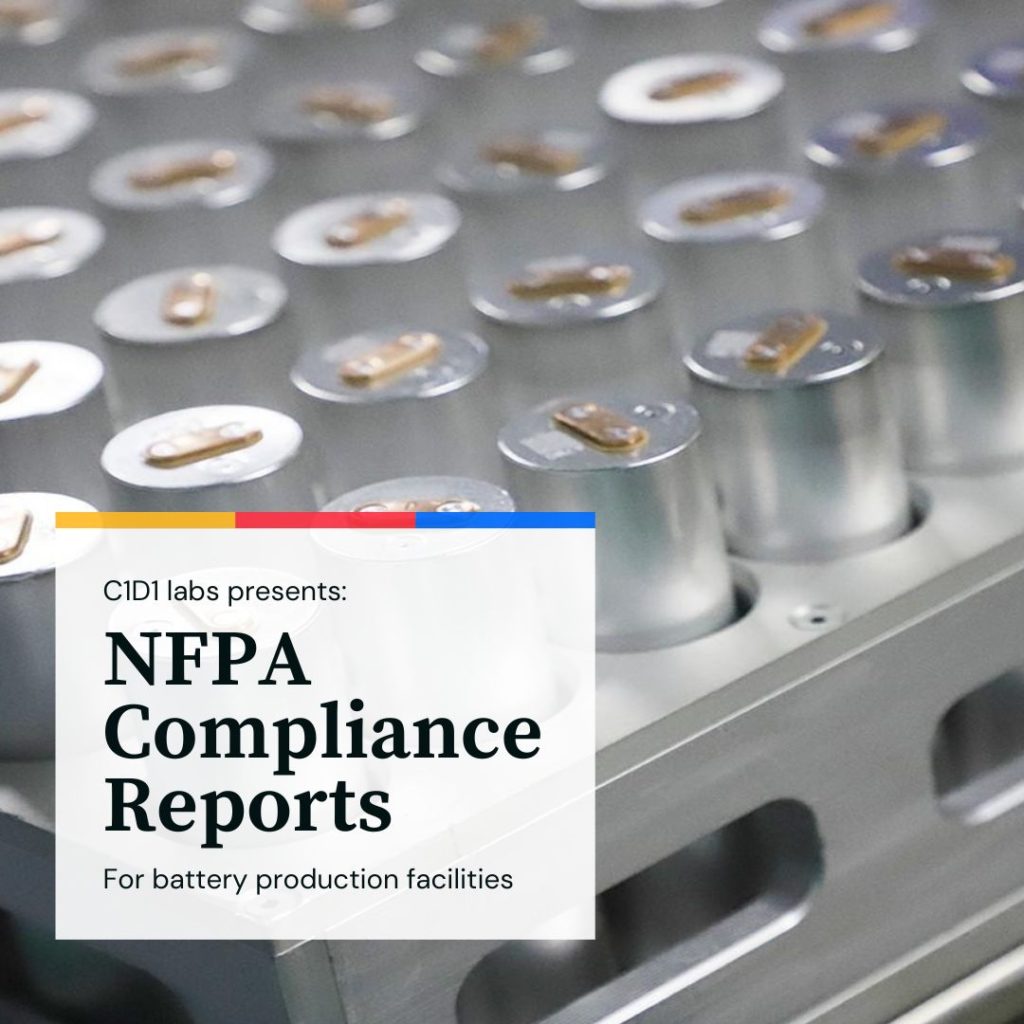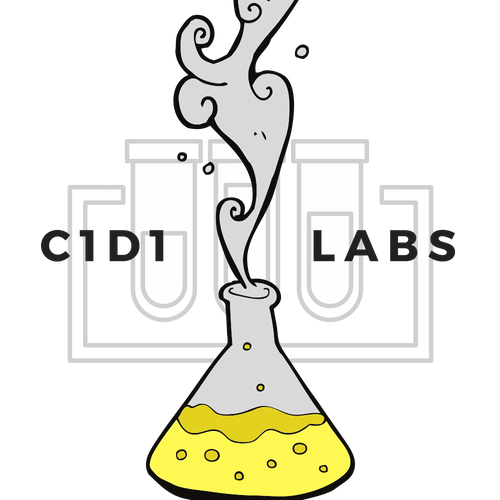A fire hazard technical report is a document that outlines the fire code compliance and equipment certifications for a lithium-ion battery production facility. This type of report is often required by the National Fire Protection Association (NFPA) in order to ensure compliance with their standards and shift liability locally from the fire department to a fire protection engineer. C1D1 Labs can help design hazardous areas and write the fire hazard report for a lithium-ion battery manufacturing facility.
The NFPA is a national organization that sets standards for fire safety. It is extremely common for local municipalities and counties (AHJ’s – authority having jurisdiction). This report must outline the potential fire hazards in the facility and how those hazards will be mitigated with compliant designs and operating procedures. This report can also review solvent amounts, classified areas for lithium-ion battery production, battery production equipment certifications, NFPA compliance, fire rated walls and control areas, and more.

Why You Need a Fire Hazard Technical Report
A fire hazard technical report is an important document that outlines the potential fire hazards in your lithium-ion battery facility. This type of report is often required by the your local fire marshal in order to ensure compliance with their standards, state standards and NFPA standards. The NFPA is a national organization that sets standards for fire safety. This report must outline the potential fire hazards in the facility and how those hazards will be mitigated.
Fire Code Compliance and Technical Reports for Battery Production Facilities
A fire hazard technical report must include a comprehensive list of all potential fire hazards in your facility, as well as your floor plan and written compliance to the codes applicable to the battery manufacturing facility design. Some common examples of potential fire hazards in battery manufacturing facilities include:
– Flammable liquids and gases
– Combustible dusts
– Hot surfaces and sparks
– Electrical equipment and wiring
– Local, State and NFPA compliance for battery production
Each of these hazards must be addressed in your report, along with information on how they will be controlled. For example, if you have flammable liquids or gases in your facility, you will need to have proper storage containers and ventilation systems in place to prevent fires from starting or spreading. C1D1 labs specializes in explosion proof areas for battery production facilities and fire rated enclosures. If you have combustible dusts, you will need to implement controls such as dust collectors and explosion-proof fans. And if you have hot surfaces or sparks, you will need to take measures to protect employees and equipment from being burned or damaged.
A well-written fire hazard technical report is essential for any battery manufacturing facility that wants to comply with NFPA standards. C1D1 Labs has extensive experience helping clients design hazardous areas and write comprehensive reports outlining all potential fire hazards. Contact us today to learn more about our services and how we can help you ensure compliance with NFPA standards.

